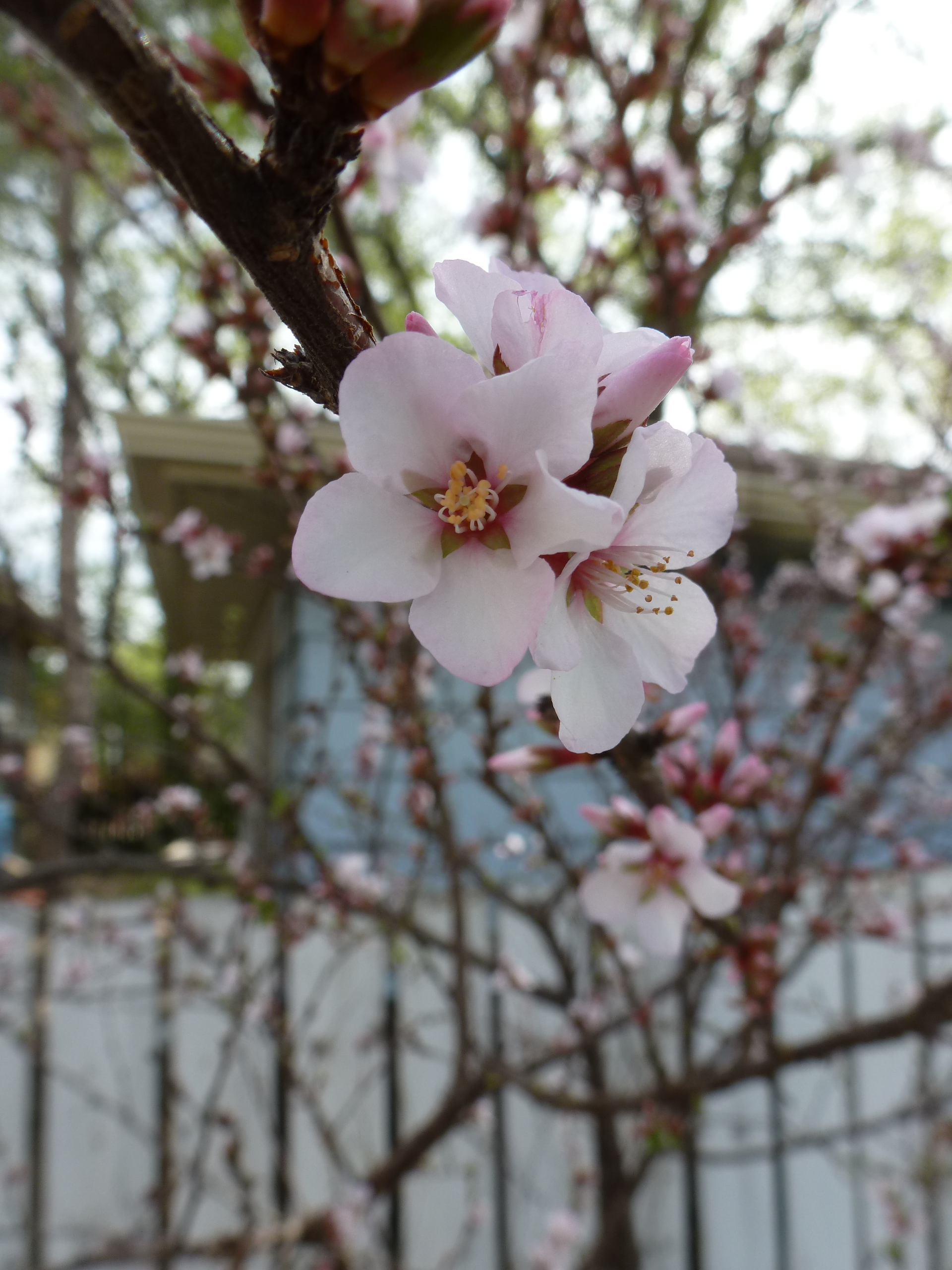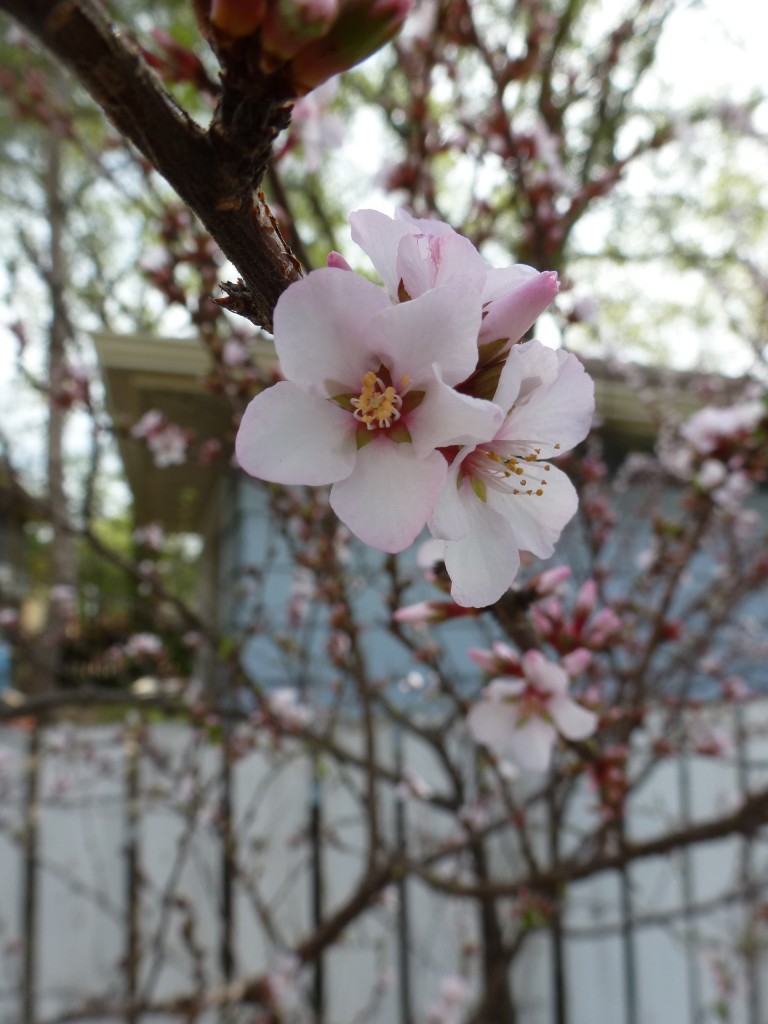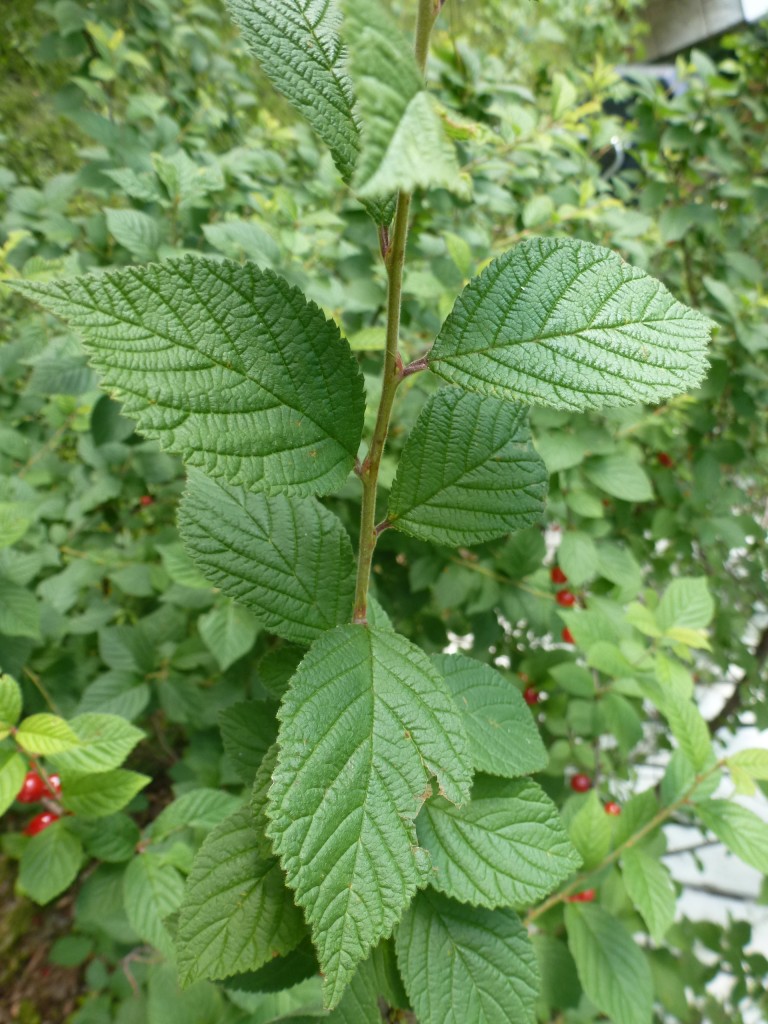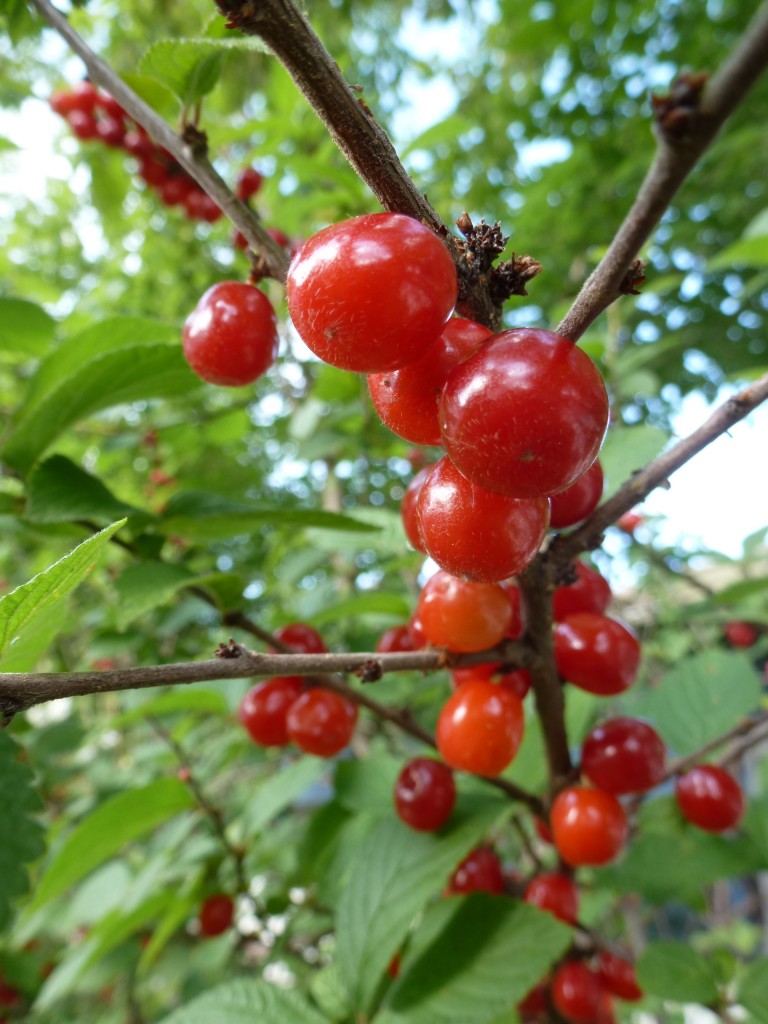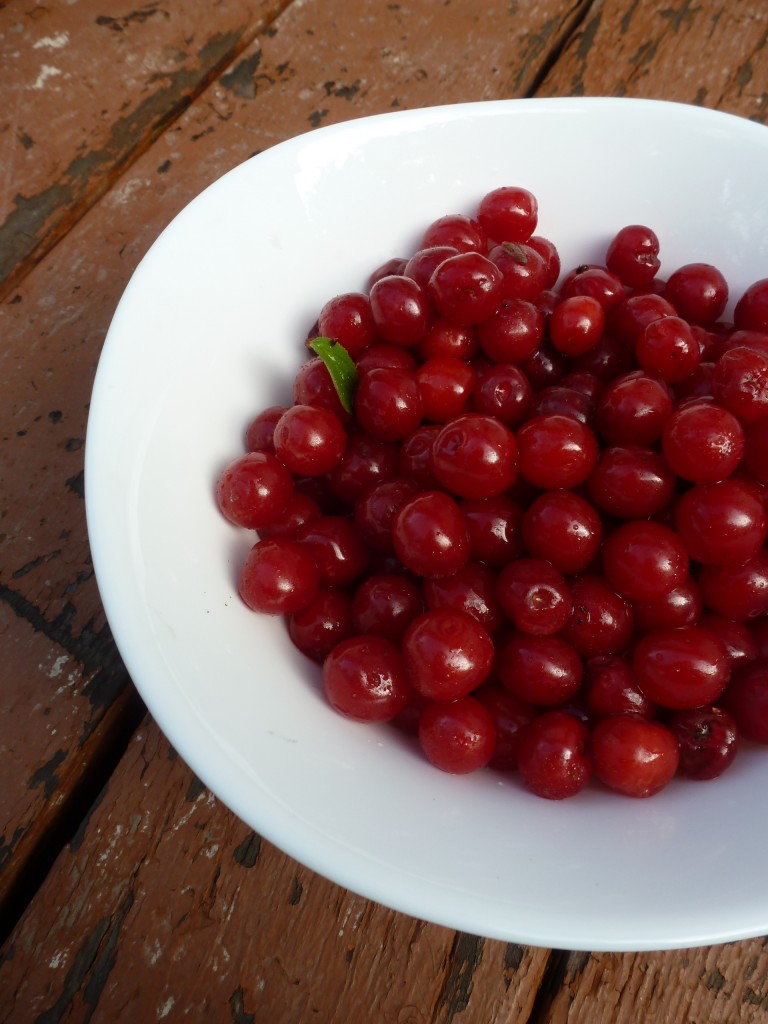I’m starting to research the plants in our yard more thoroughly. This is the first of several “Plant Profiles” I hope to write.
Prunus tomentosa
“Prunus” means plum (think: prune), and “tomentosa” means densely hairy, referring, I think, to the leaves. This shrub is native to the far east, notably the Himalayas, China, and Japan. “Nanking” is the old roman-alphabet word for the Chinese city now transliterated as Nanjing.
As a fruit tree the Nanking is very much inferior to other sour varieties like Evans and Carmine Jewel. While the fruit is merely adequate, the plant has some striking ornamental qualities. The mature wood is a lustrous red roan. When young the shrubs are a bit twiggy and awkward, but as they mature they develop a more open, elegant form with a slight weeping tendency.
The Flowers
These darling buds of May are one of the great pleasures of spring. The Nanking blossoms appear in our yard around the second week of May, before the leaves have emerged. They are white with a pink blush that contrasts beautifully with the roan of the wood. Proverbially ephemeral, the blossoms start to fall off about a week after blooming.
Most sources describe the flowers as fragrant, though ours have very little aroma.
The Leaves
Nanking leaves are elliptical, 2-3 inches long, with irregularly serrated edges. They are deeply veined, and a bit fuzzy, especially on the pale underside.
The fuzzy underside that gives the plant its scientific species name tomentosa:
The Fruit
Nanking cherry bushes need another Prunus plant to pollinate them. In other words you’ll need to have another Nanking cherry near by, or any type of cherry, or a plum, or an apricot, and so on. This is currently our biggest hindrance to fruit set. In years past, though the entire bush erupts in blossoms, only a branch or two has produced fruit. The spring of 2013, for a handful of reasons including mild May weather, was a fantastic season for pollinators, and most of the branches of our shrub produced fruit. We are planting a few varieties of sour cherry nearby that will help pollinate the Nanking in future years.
The cherries themselves are quite small, about 1 cm in diameter, but turn a brilliant red in mid July. Unlike the image of cherries that most of us have in our brains, Nankings are connected to the branches of the shrub by very short stalks. They do not grow in the drooping clusters, but rather in lines up and down the length of the branches.
While I like Nanking cherries, truthfully they are not half as flavourful as other local sour varieties like Evans. When ripe they are a good balance of sweet and sour and can be comfortably eaten out of hand, but they don’t have the crazy almond aroma of Evans. Birds love them: robins eat them whole, and sparrows peck the flesh off the pit. If we wait till the cherries are truly ripe, roughly half of our already modest crop is taken by birds. We’re considering netting in future years.
The near-crimson of ripe Nanking cherries.
Pruning
The Nanking sets its buds for the following year in the fall, so pruning is best done in early summer, after the blossoms have dropped.
